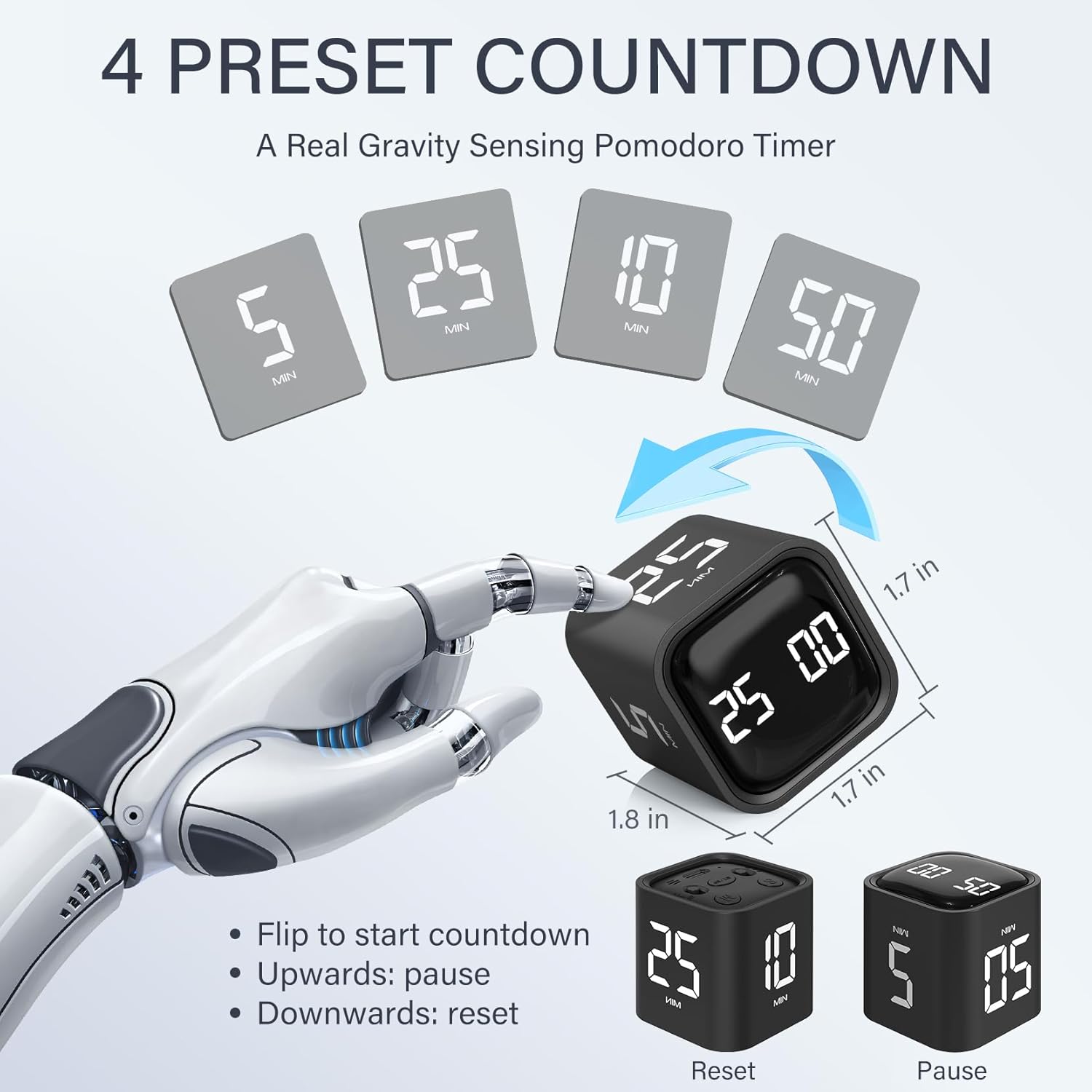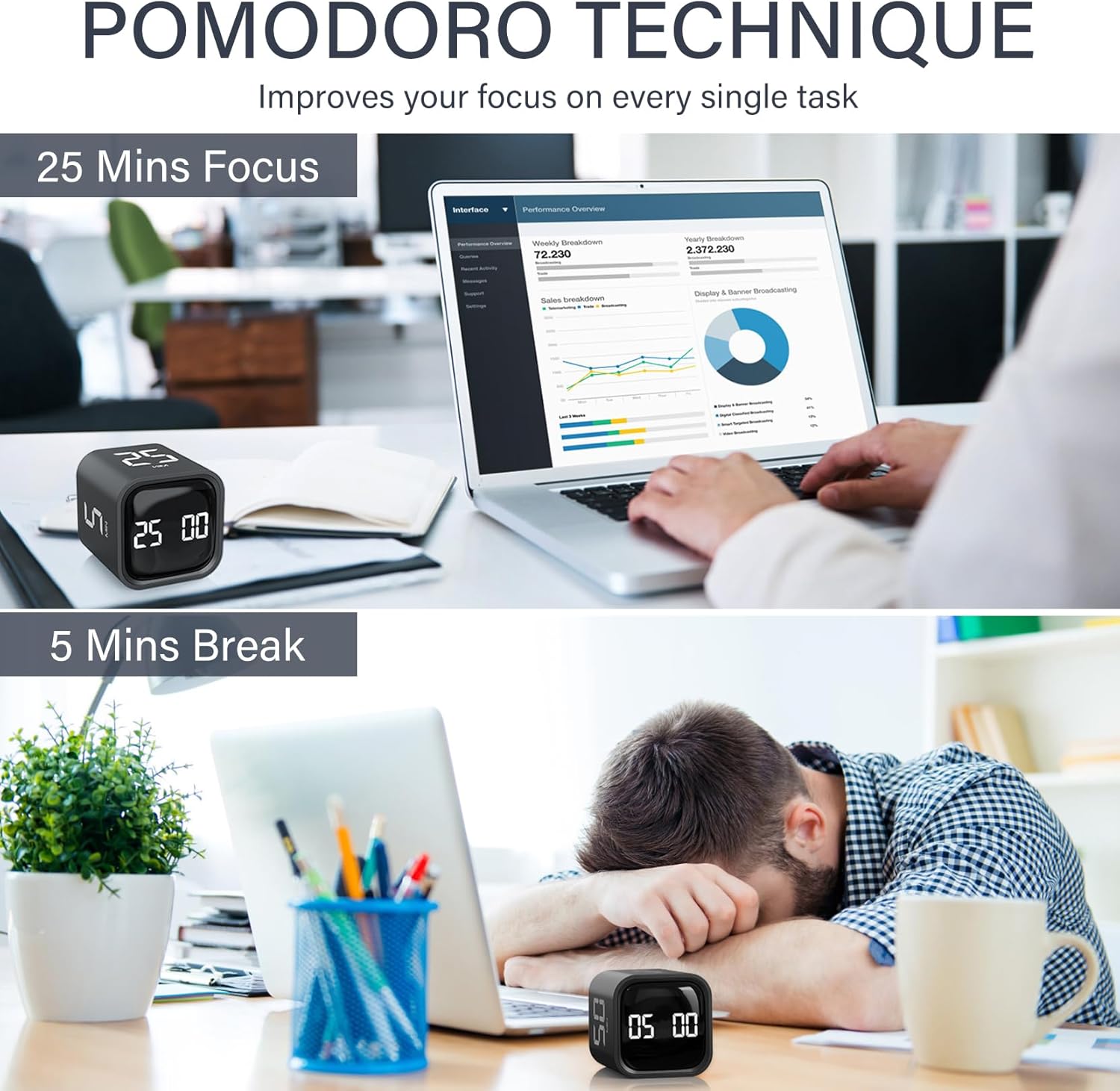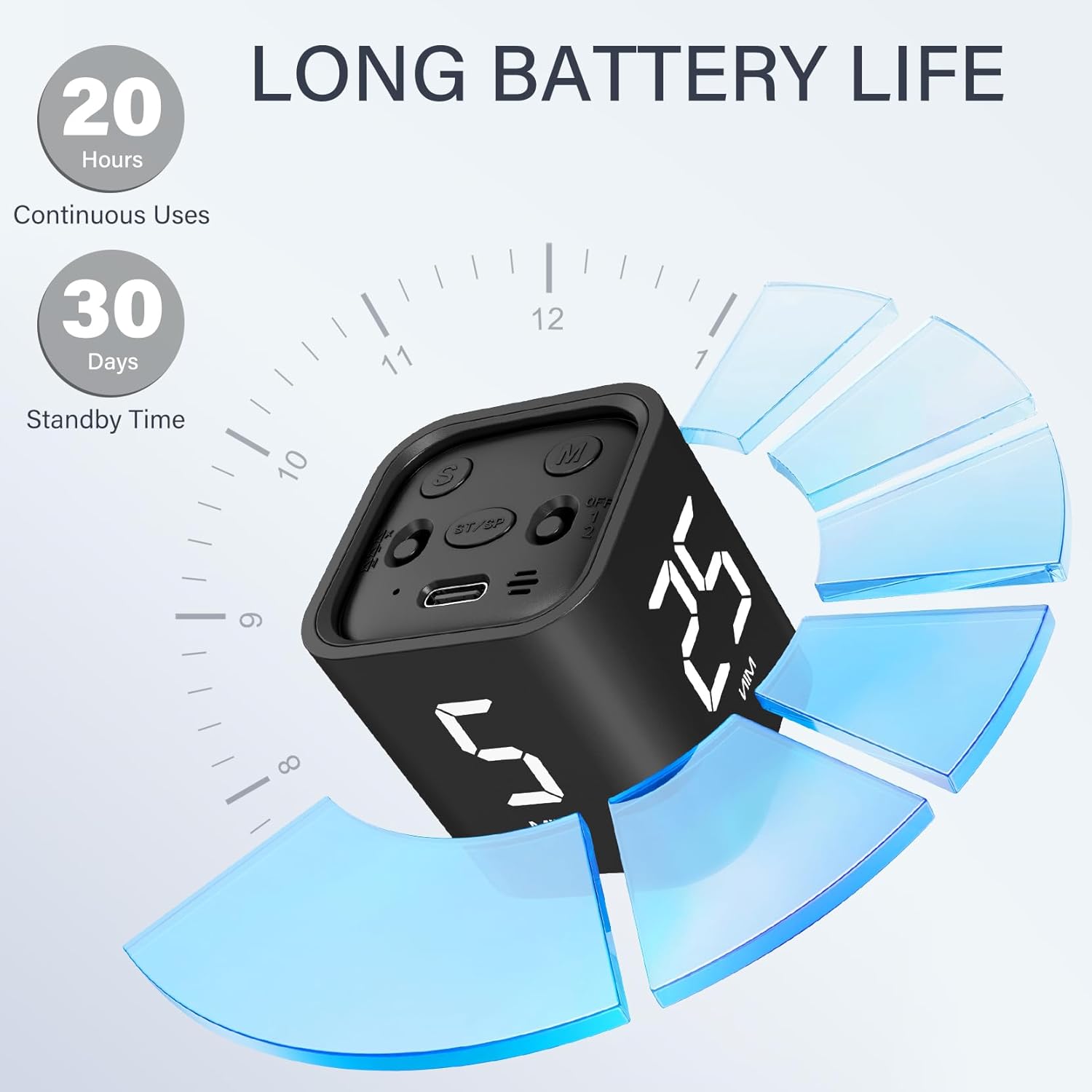
Rotating Pomodoro Timer 5, 25, 10 50 Review pomodoro technique – Oemiu
Mastering Focus: The Rotating Pomodoro Timer Approach
In a world saturated with distractions, maintaining focus can feel like an uphill battle. We’re constantly bombarded with notifications, emails, and the ever-present temptation of social media. Productivity methods abound, each promising to be the silver bullet for our attention woes. Among these, the Pomodoro Technique stands out for its simplicity and effectiveness. But what if we could adapt and refine this classic method to better suit our individual needs and work styles? This is where the rotating Pomodoro timer, specifically configured for 5, 25, 10, and 50-minute intervals, offers a compelling alternative, providing flexibility and a more personalized approach to time management and focused work.
The Allure of the Classic Pomodoro Technique
The original Pomodoro Technique, developed by Francesco Cirillo in the late 1980s, is elegantly simple. It involves working in focused 25-minute intervals, separated by short 5-minute breaks. After four such “pomodoros,” a longer 20-30 minute break is taken. The underlying principle is to break down work into manageable chunks, forcing you to concentrate intensely for short bursts, thereby mitigating distractions and promoting sustained focus. The short breaks act as mental resets, preventing burnout and allowing your brain to consolidate information. This structure helps combat procrastination by making tasks seem less daunting and provides a clear framework for managing time. The method’s popularity stems from its ease of implementation – all you need is a timer and a willingness to commit. Millions have found success using this framework, leading to increased productivity, reduced stress, and a greater sense of accomplishment. However, while the classic approach is effective, it’s not a one-size-fits-all solution. Some tasks require longer periods of uninterrupted concentration, while others benefit from more frequent, shorter breaks. This is where a modified approach, such as the rotating Pomodoro timer, comes into play.
Why a Rotating Pomodoro Timer? Tailoring the Technique to Your Needs
The beauty of the rotating Pomodoro timer lies in its adaptability. Instead of rigidly adhering to the 25/5 minute structure, it allows you to cycle through different interval lengths based on the nature of the task and your personal preferences. The 5, 25, 10, 50-minute configuration offers a spectrum of options to address varying demands. The 5-minute bursts are ideal for quick tasks, such as responding to emails or tidying up your workspace. The standard 25-minute pomodoro remains useful for focused work on specific tasks. The 10-minute break provides a slightly longer breather, allowing you to stretch, grab a snack, or engage in a mindful activity. The 50-minute block is perfect for deep work sessions that require sustained concentration, such as writing, coding, or in-depth research. This rotation promotes a dynamic workflow that keeps you engaged and prevents monotony. Imagine you’re working on a complex coding project. You might start with a 50-minute block to dive deep into the code, followed by a 10-minute break to clear your head. Then, you could switch to 25-minute intervals for debugging and testing, punctuated by 5-minute breaks to address quick fixes or consult documentation. The flexibility to adapt the timer to the task at hand is a key advantage of this approach. Furthermore, by strategically adjusting the work/break ratio, you can optimize your focus and prevent mental fatigue, leading to increased productivity and a more enjoyable work experience. Experimenting with the different intervals and observing their impact on your performance is crucial to unlocking the full potential of this technique. This personalized time management is a powerful tool for both personal and professional growth.
Deconstructing the 5, 25, 10, 50 Minute Rotation
Let’s examine each interval and how it can be utilized to its fullest potential. The 5-minute burst is not merely a buffer; it’s a strategic tool. Use it for:
- Quick email triage: Scan your inbox and respond to urgent messages.
- Task switching: Smoothly transition between different projects.
- Micro-breaks: Step away from your desk, stretch, and refocus your eyes.
- Quick organization: Tidy up your workspace to minimize distractions.
- Brain dump: Jot down any thoughts or ideas that are cluttering your mind.
The 25-minute interval remains the backbone of the Pomodoro Technique, well-suited for tasks requiring focused attention and minimal interruptions. Use it for:
- Writing: Work on a specific section of a report, article, or blog post.
- Coding: Focus on a particular function or module.
- Data analysis: Analyze a set of data and draw meaningful conclusions.
- Problem-solving: Tackle a specific challenge or obstacle.
- Learning: Read and comprehend a chapter of a textbook or online course.
The 10-minute break offers a longer period of respite, allowing you to recharge and prepare for the next work session. Use it for:
- Mindful meditation: Practice a short meditation session to reduce stress and improve focus.
- Light exercise: Do some stretching or yoga to improve circulation and energy levels.
- Healthy snack: Grab a nutritious snack to fuel your brain and body.
- Social interaction: Engage in a brief conversation with a colleague or friend.
- Creative brainstorming: Let your mind wander and generate new ideas.
Finally, the 50-minute block is designed for deep work, enabling you to immerse yourself in tasks that demand sustained concentration and minimal distractions. Use it for:
- Complex problem-solving: Tackle challenging problems that require in-depth analysis.
- Creative projects: Immerse yourself in writing, designing, or composing music.
- Strategic planning: Develop long-term plans and strategies.
- Research: Conduct in-depth research on a specific topic.
- Learning new skills: Dedicate focused time to mastering a new skill.
By strategically rotating through these intervals, you can create a dynamic workflow that optimizes your focus, prevents burnout, and promotes sustained productivity. Remember that flexibility is key; don’t be afraid to adjust the rotation based on your individual needs and the demands of the task at hand. Embracing this adaptability is crucial for maximizing the benefits of the rotating Pomodoro timer approach and refining your **Pomodoro-inspired work sessions**.
Example Scenarios: Applying the Rotating Pomodoro Timer
To further illustrate the versatility of the rotating Pomodoro timer, let’s consider a few example scenarios. Imagine you’re a freelance writer working on several projects simultaneously. You could use the following rotation:
- 50 minutes: Deep work on a long-form article.
- 10 minutes: Break – stretch, grab a coffee.
- 25 minutes: Editing and proofreading a short blog post.
- 5 minutes: Break – respond to client emails.
- 50 minutes: Researching a new topic for a future article.
- 10 minutes: Break – mindful meditation.
- 25 minutes: Brainstorming ideas for social media content.
- 5 minutes: Break – tidy up workspace.
Alternatively, consider a software developer working on a complex application. They might use the following rotation:
- 50 minutes: Coding a new feature.
- 10 minutes: Break – walk around, clear head.
- 25 minutes: Debugging existing code.
- 5 minutes: Break – consult documentation.
- 50 minutes: Writing unit tests.
- 10 minutes: Break – social interaction with a colleague.
- 25 minutes: Code review.
- 5 minutes: Break – quick organization of files.
Even students can benefit from this approach. A student preparing for exams might use the following rotation:
- 50 minutes: Studying a challenging subject.
- 10 minutes: Break – listen to music, relax.
- 25 minutes: Reviewing notes.
- 5 minutes: Break – quick quiz.
- 50 minutes: Working on practice problems.
- 10 minutes: Break – healthy snack.
- 25 minutes: Summarizing key concepts.
- 5 minutes: Break – plan next study session.
These examples demonstrate how the rotating Pomodoro timer can be adapted to a wide range of tasks and work styles. The key is to experiment and find a rotation that works best for you. By thoughtfully considering the demands of each task and your personal preferences, you can optimize your focus, prevent burnout, and achieve your goals more effectively. Don’t be afraid to experiment with different durations and sequences until you discover the perfect combination for your needs. Remember, the goal is to enhance your productivity and well-being, and this modified approach is one tool to help you achieve it. Adapting to the **Pomodoro timer variants** can be beneficial in many unique working situations.
Tools and Techniques for Implementing the Rotating Pomodoro
Implementing the rotating Pomodoro timer is relatively straightforward. You’ll need a timer that allows you to set custom intervals. There are numerous options available, including:
- Physical timers: Traditional kitchen timers can be used, but digital timers with programmable intervals are more convenient.
- Mobile apps: Many Pomodoro timer apps are available for smartphones and tablets, offering customizable intervals, notifications, and progress tracking.
- Desktop software: Dedicated Pomodoro timer software can be installed on your computer, providing similar features to mobile apps.
- Online timers: Numerous websites offer free Pomodoro timer tools that can be used directly in your browser.
Regardless of the tool you choose, it’s important to select one that is easy to use and provides clear visual or auditory cues to signal the start and end of each interval. Once you have your timer set up, it’s crucial to minimize distractions during the work intervals. This may involve:
- Turning off notifications on your phone and computer.
- Closing unnecessary browser tabs and applications.
- Finding a quiet workspace where you won’t be interrupted.
- Communicating your focus schedule to colleagues or family members.
During the breaks, it’s important to step away from your work and engage in activities that help you recharge and refocus. This could include:
- Stretching or light exercise.
- Mindful meditation or deep breathing exercises.
- Listening to music or reading a book.
- Engaging in a social interaction with a colleague or friend.
- Having a healthy snack or drink.
It’s also helpful to track your progress and analyze your performance. This can be done using a simple spreadsheet or a dedicated Pomodoro tracking app. By monitoring your work habits, you can identify areas for improvement and refine your rotating Pomodoro timer approach over time. For example, you might discover that you’re more productive during certain times of the day or that you benefit from longer breaks after particularly challenging tasks. The key is to be mindful and adaptive, constantly adjusting your approach to optimize your focus and productivity. It’s also valuable to understand common pitfalls. Many find themselves distracted during even the shortest breaks, or tempted to extend a work period when they are ‘in the zone.’ Guarding against these temptations is crucial to maintaining the integrity of the technique and realizing its benefits. Ultimately, mastering the **Pomodoro time tracker technique** lies in consistent practice and a willingness to adapt.
Potential Benefits and Drawbacks of the Rotating Pomodoro Approach
Like any productivity technique, the rotating Pomodoro timer has its advantages and disadvantages. Some potential benefits include:
- Increased focus and concentration: The structured intervals help you minimize distractions and maintain sustained attention.
- Improved time management: The clear framework helps you break down tasks into manageable chunks and allocate your time effectively.
- Reduced procrastination: The shorter work intervals make tasks seem less daunting, making it easier to get started.
- Enhanced productivity: By optimizing your focus and preventing burnout, you can achieve more in less time.
- Greater flexibility: The customizable intervals allow you to adapt the technique to your individual needs and work styles.
- Reduced stress and anxiety: The structured approach can help you feel more in control of your work and reduce feelings of overwhelm.
However, there are also some potential drawbacks to consider:
- Disruption of flow state: The forced breaks can interrupt your flow state, making it difficult to get back into the zone.
- Rigidity: Some individuals may find the structured approach too restrictive and prefer a more flexible workflow.
- Difficulty adapting: It may take some time to find the optimal rotation and adjust to the new workflow.
- Not suitable for all tasks: The technique may not be well-suited for tasks that require long periods of uninterrupted concentration or tasks that are highly unpredictable.
It’s important to weigh these pros and cons carefully before adopting the rotating Pomodoro timer approach. If you find that the benefits outweigh the drawbacks, it may be a valuable tool for enhancing your productivity and well-being. However, if you find that the technique is not a good fit for your work style or personality, there are many other productivity methods to explore. Remember that the key is to find a system that works for you and helps you achieve your goals in a sustainable and enjoyable way. Many alternative time management methods exist, such as time blocking, Getting Things Done (GTD), and the Eisenhower Matrix. Exploring these options can help you find a technique that complements or even replaces the Pomodoro method. Remember, too, that **adaptive Pomodoro sessions** can be beneficial to your work style, with the right implementation.
Comparing Timers: Features and Costs
Selecting the right timer is crucial for effectively implementing the Rotating Pomodoro Technique. Here’s a comparison of different timer options:
| Timer Type | Features | Pros | Cons | Approximate Cost |
|---|---|---|---|---|
| Physical Timer (e.g., Kitchen Timer) | Simple timer with dial, audible alarm. | Affordable, easy to use, no distractions from technology. | Limited precision, can be noisy, lacks customization. | $5 – $20 |
| Mobile App (e.g., Forest, Focus To-Do) | Customizable intervals, progress tracking, gamification, distraction blocking. | Portable, feature-rich, visually appealing, often free or low cost. | Potential for distractions from other apps, battery drain. | Free (with ads) to $10 (premium version) |
| Desktop Software (e.g., Tomighty) | Customizable intervals, progress tracking, minimal interface, focus mode. | Designed specifically for focused work, distraction-free, integrates with desktop environment. | Limited portability, requires software installation, may have fewer features than mobile apps. | Free to $20 |
| Online Timer (e.g., TomatoTimer.com) | Simple timer with customizable intervals, accessible from any browser. | Convenient, no installation required, often free. | Requires internet connection, potential for distractions from other websites, limited features. | Free |
Choosing the right timer depends on your individual preferences and needs. If you prefer a simple, distraction-free option, a physical timer may be the best choice. If you want a feature-rich and portable solution, a mobile app is a good option. If you prefer a dedicated tool for focused work, desktop software is a good choice. And if you need a quick and easy solution that you can access from any device, an online timer is a good option. Regardless of which timer you choose, make sure it allows you to set custom intervals and provides clear visual or auditory cues to signal the start and end of each interval. Remember that consistent usage, regardless of the platform, is key to improving productivity using **advanced Pomodoro timing techniques**.
Frequently Asked Questions (FAQ)
What is the ideal duration for the long break after completing several rotating Pomodoro cycles?
The ideal duration for the long break after completing several rotating Pomodoro cycles typically ranges from 20 to 30 minutes. This longer break serves as a more substantial mental reset, allowing you to fully disengage from your work and recharge your cognitive batteries. The exact duration can be adjusted based on your individual needs and preferences. If you find yourself feeling particularly fatigued or overwhelmed, you may benefit from a longer break. Conversely, if you feel refreshed and ready to get back to work, you may be able to shorten the break slightly. During the long break, it’s important to engage in activities that are completely unrelated to your work. This could include taking a walk, listening to music, reading a book, or spending time with loved ones. The goal is to create a clear separation between work and rest, allowing your brain to fully recover and prepare for the next set of Pomodoro cycles.
How do I handle unexpected interruptions during a Pomodoro interval?
Unexpected interruptions are inevitable, even with the best planning. The key is to minimize their impact on your focus and productivity. If the interruption is brief and urgent (e.g., a quick question from a colleague), address it quickly and return to your task as soon as possible. If the interruption is longer or less urgent (e.g., a phone call or a meeting), note where you left off and reschedule the task for later. Avoid getting sidetracked by the interruption and resist the urge to multitask. When you return to the task, take a few moments to review your notes and re-familiarize yourself with the material. If the interruption significantly disrupted your focus, you may want to consider restarting the Pomodoro interval. It’s also important to be proactive in preventing interruptions. This could involve turning off notifications, closing unnecessary browser tabs, and communicating your focus schedule to colleagues or family members. By minimizing interruptions and handling them effectively, you can maintain your focus and maximize your productivity.
Is the rotating Pomodoro timer suitable for all types of tasks?
While the rotating Pomodoro timer is a versatile technique, it may not be suitable for all types of tasks. Tasks that require long periods of uninterrupted concentration, such as writing a book or conducting in-depth research, may not be well-suited for the shorter Pomodoro intervals. In these cases, you may want to use the longer 50-minute interval or consider alternative time management techniques. Similarly, tasks that are highly unpredictable or require frequent interruptions may not be conducive to the structured Pomodoro approach. For example, customer service representatives or emergency responders may find it difficult to adhere to a strict timer schedule. However, even in these situations, you may be able to adapt the technique to fit your needs. For example, you could use the timer to focus on specific tasks during lulls in activity or to manage your time between calls or emergencies. Ultimately, the suitability of the rotating Pomodoro timer depends on the nature of the task and your individual work style. Experimentation is key to determining whether it is a good fit for your needs.
How can I customize the rotating Pomodoro timer to better suit my needs?
The beauty of the rotating Pomodoro timer lies in its adaptability. You can customize the intervals to better suit your individual needs and preferences. For example, if you find that the 25-minute intervals are too short, you can increase them to 30 or 40 minutes. Conversely, if you find that the 5-minute breaks are too long, you can shorten them to 2 or 3 minutes. You can also adjust the order of the intervals to better match your workflow. For example, if you prefer to start with a longer period of deep work, you could begin with the 50-minute interval. Experiment with different durations and sequences until you find a combination that works best for you. It’s also important to consider the type of task you’re working on. For example, you may want to use longer intervals for complex tasks that require sustained concentration and shorter intervals for simpler tasks that can be completed quickly. Don’t be afraid to make adjustments along the way. The goal is to find a system that optimizes your focus, prevents burnout, and helps you achieve your goals more effectively. This includes evaluating the best **Pomodoro method techniques** for your own work preferences.
What are some common mistakes to avoid when using the rotating Pomodoro timer?
Several common mistakes can hinder the effectiveness of the rotating Pomodoro timer. One mistake is failing to plan your tasks in advance. Without a clear plan, you may waste valuable time deciding what to work on during each interval. Another mistake is not minimizing distractions. Turning off notifications, closing unnecessary browser tabs, and finding a quiet workspace are crucial for maintaining focus. A further mistake is skipping breaks or working through them. Breaks are essential for recharging your brain and preventing burnout. It’s also important to avoid multitasking during the work intervals. Focus on one task at a time and avoid switching between tasks until the interval is complete. Finally, don’t be too rigid with the technique. If you find that the intervals are not working for you, adjust them or consider alternative time management methods. The goal is to find a system that works for you, not to blindly follow a set of rules.
How can I integrate the rotating Pomodoro timer with other productivity techniques?
The rotating Pomodoro timer can be effectively integrated with other productivity techniques to create a more comprehensive and personalized system. For example, you can combine it with the Getting Things Done (GTD) method to manage your tasks and projects. Use GTD to capture, organize, and prioritize your tasks, and then use the Pomodoro timer to focus on completing those tasks in manageable intervals. You can also combine the Pomodoro timer with time blocking. Schedule specific blocks of time for different tasks, and then use the Pomodoro timer to focus on those tasks during the allocated time blocks. Furthermore, you can integrate the Pomodoro timer with mindfulness techniques. Use the breaks to practice mindfulness meditation or deep breathing exercises to reduce stress and improve focus. By combining the rotating Pomodoro timer with other productivity techniques, you can create a powerful and personalized system for managing your time, increasing your focus, and achieving your goals.
Can I use the rotating Pomodoro timer for team projects?
Yes, the rotating Pomodoro timer can be adapted for use in team projects, although it requires careful coordination and communication. One approach is to designate specific time slots for individual focused work, followed by team collaboration sessions. During the individual work slots, team members can use the rotating Pomodoro timer to focus on their assigned tasks. During the team collaboration sessions, members can share progress, discuss challenges, and brainstorm solutions. It’s important to establish clear guidelines for communication and collaboration during these sessions to ensure that they are productive and efficient. Another approach is to use the timer to manage team meetings. Set a timer for each agenda item and stick to the allocated time. This can help keep meetings focused and prevent them from running over time. You can also use the breaks to encourage informal communication and team building. By adapting the rotating Pomodoro timer to suit the needs of your team, you can improve collaboration, increase productivity, and create a more focused and efficient work environment. Regular assessment of how the team finds the timing of the session is crucial to finding the most suitable work habits.














